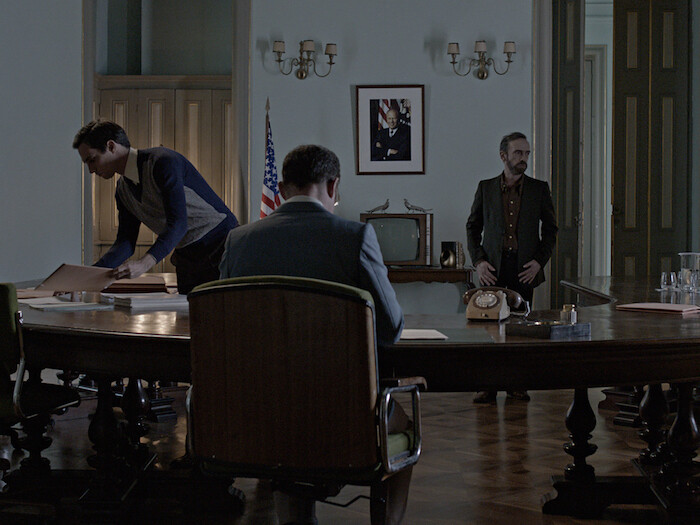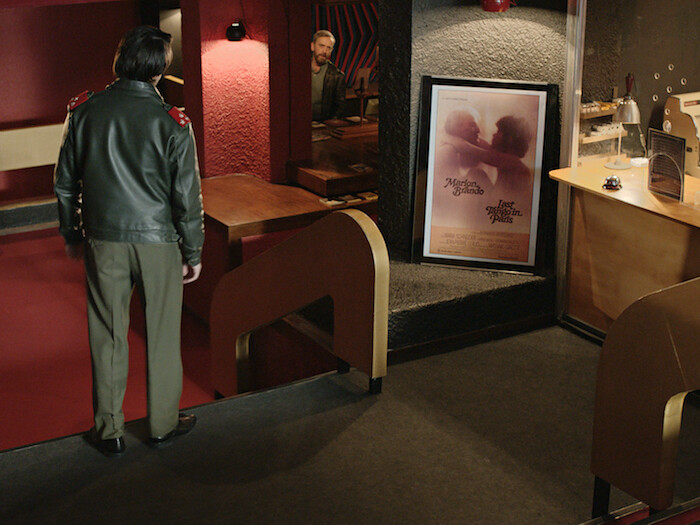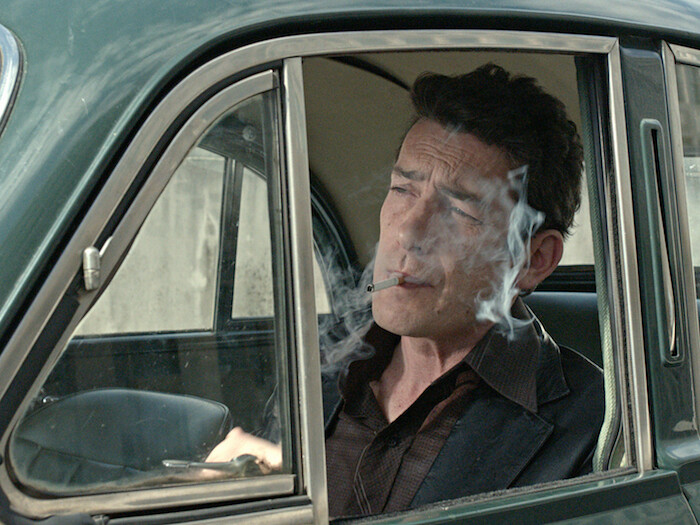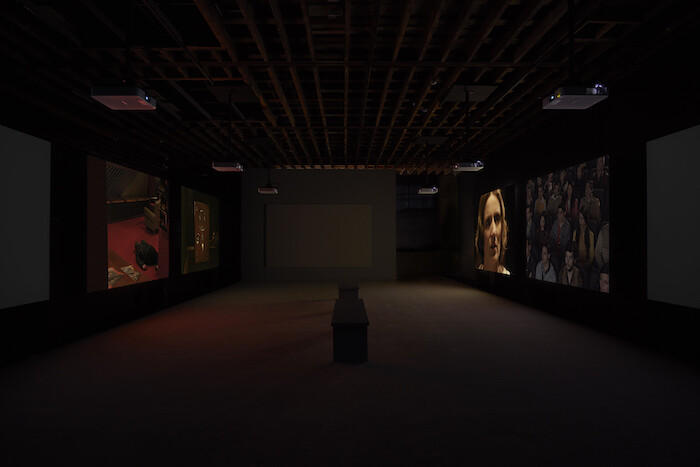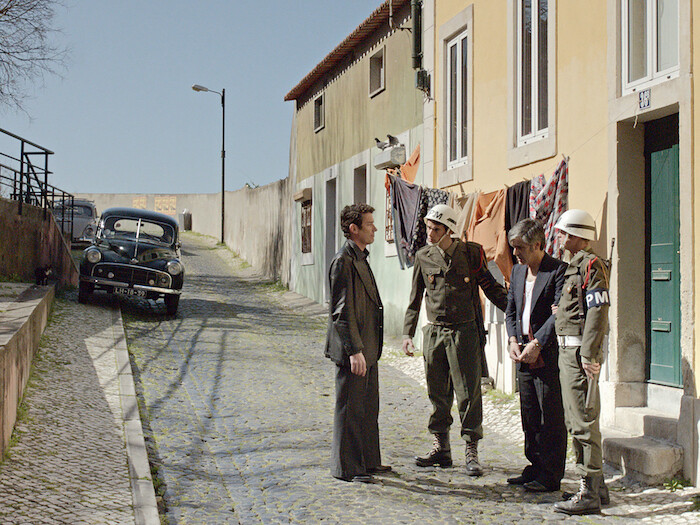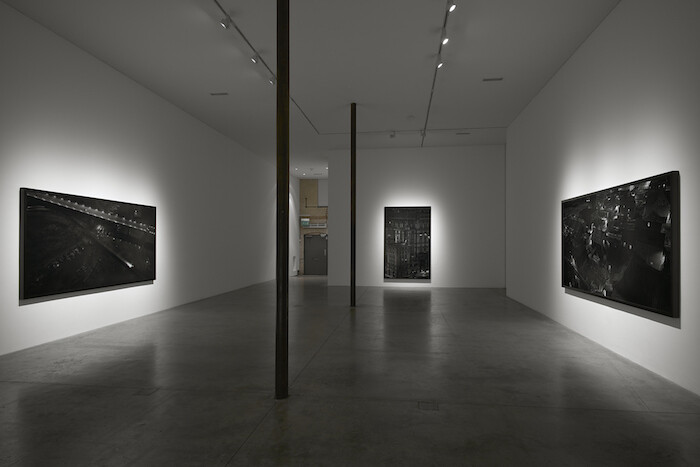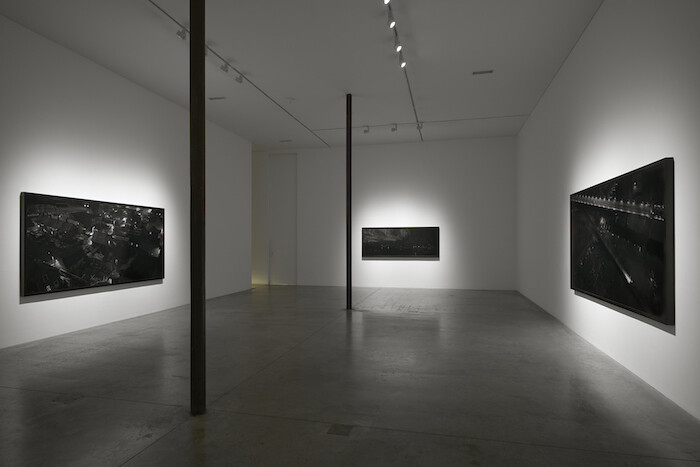November 25, 1975 marked the beginning of the end of Portugal’s Processo Revolucionário em Curso (Ongoing Revolutionary Process). This brief socialist experiment, which began with the Carnation Revolution of April 25, 1974, marked the attempt by an alliance between the military, workers’ unions, and political movements to free the country from its economic monopolies by supporting communes, land reform, the collective control of industry, and participatory projects in housing and other areas of society. After the turmoil of the “hot summer” of 1975—featuring bombings of the offices of leftist political parties, a siege of the constitutional assembly by workers, and November’s anti-communist counter coup—the moderate left finally managed to block the movement, opening the way for the inclusion of Portugal in the capitalist market economy of the European Union.
Stan Douglas’s new video installation The Secret Agent (2015) is set amidst the political intrigue of this “hot” period, though it is inevitable—in the wake of the 2015 Portuguese elections that pushed the centrist Socialists to make a historic deal with the Communist Party and the Left Bloc—that it resonates with contemporary ideological shifts. The film—a 50-minute loop displayed on a six-channel projection, three on each opposing wall on an otherwise dark space—is an adaptation of Joseph Conrad’s 1907 novella of the same name. Its script is superbly well-adapted by the artist, and—given its slow, brooding pace (there are no extreme jump-cuts between channels), the large cast of characters, and existential yet sharp dialogue—it feels more like a film noir than the thriller promised by its plot. This noir mood is further expanded by the large-scale black-and-white photographic works installed on the floor below, a series of mise-en-scènes drawn from the cinematic theatrical production Helen Lawrence (2014), a collaboration with screenwriter Chris Haddock which saw actors perform in front of a projected film. Images such as The Second Hotel Vancouver (2014) address the derelict places and neighborhoods that littered North America in the immediate postwar period, before the economic and ideological golden years of the mid-twentieth century.
Conrad’s novel tells the story of Verloc, an anarchist secret agent who plots to blow up the Greenwich Observatory. In Douglas’s version the target is a telecommunications antenna near Lisbon linking Europe to America. The US ambassador to Portugal, for whom Verloc works, understands how, after Portugal’s isolationist regime it is “modernity itself that needs to be exploded,” pulling the country into the future. This poses the question of whose ideological modernity, and the six-screen display expresses the play between police, insiders, revolutionaries, and common citizens. We might read it as an attempt to recreate the struggle for hierarchical power, and different futures, in the exhibition space.
The independence movements in Portugal’s African colonies, along with the revolution at home, put Portugal at the center of international geopolitics. The emergence of a communist state at the edge of Europe—with the potential to “contaminate” Spain—threatened to undermine the US-European axis, while influence over the newly independent African states was up for grabs. In Portugal some kept faith with NATO (of which, despite its dictatorship, Portugal was a founding member in 1949), while others were supportive of the communist movements in Africa. As part of a NATO operation to contain the influence of the Portuguese Communist Party, the supercarrier USS Saratoga was anchored throughout the winter of 1975 in Lisbon’s river Tagus with canons pointing at the presidential palace, while rumors of a CIA backed anti-communist coup made the rounds in the capital. Henry Kissinger’s plans were to quarantine the country: any involvement would have “to take some symbolic form—making them outcasts without casting them out.”1 On the communist side Otelo Saraiva de Carvalho, Commander-in-chief of the Armed Forces Movement, flew to Cuba to meet Fidel Castro.
The Secret Agent was eight years in the making, and resulted from an invitation to make a film dealing with the Portuguese context. It was made in collaboration with Carré d’Art (Nimes), Haus der Kunst (Munich), Kunsthal Charlottenburg (Copenhagen), Fruitmarket Gallery (Edinburgh), Irish Museum of Modern Art (Dublin), Wiels (Brussels), and Berardo Collection Museum, Lisbon. It was produced by O Som e a Fúria (the company behind cinema director Miguel Gomes’s Tabu [2012] and his recent six hour-long version of Arabian Nights [2015]) and gathers a starry Portuguese cast. Perhaps its long gestation and local dialogue explains its subtlety in inhabiting the Portuguese post-revolutionary years, but it is intriguing to see a foreign artist (in this case Canadian) parachute himself into this historical period and avoid the disastrous arrogance or naiveté of some artists who chase national histories, identities, and “hot summers” around the world. With the increasing number of residencies and international commissions, globe-trotting artists can be guilty of making statements about local histories alien to them—most damagingly when addressing former colonial spaces, histories, and disputes. Douglas sidesteps this tendency to overreach by focusing on telling a cinematic fiction that views history through several private perspectives. To those with a strong political engagement in the region, the reluctance to adopt a single position may be underwhelming; yet this fictional approach opens up an imaginative space to inhabit, rather than explain or appropriate, a period still under dispute.
David Binder, “U.S., in Message to Lisbon, Says Move Left is a Danger to NATO,” The New York Times, March 27, 1975, p. 2, cited in Pedro Lapa, History and Interregnum: Three Works by Stan Douglas (Lisbon and Berlin: Berardo Museum Collection and Archive Books, 2015), 30.
